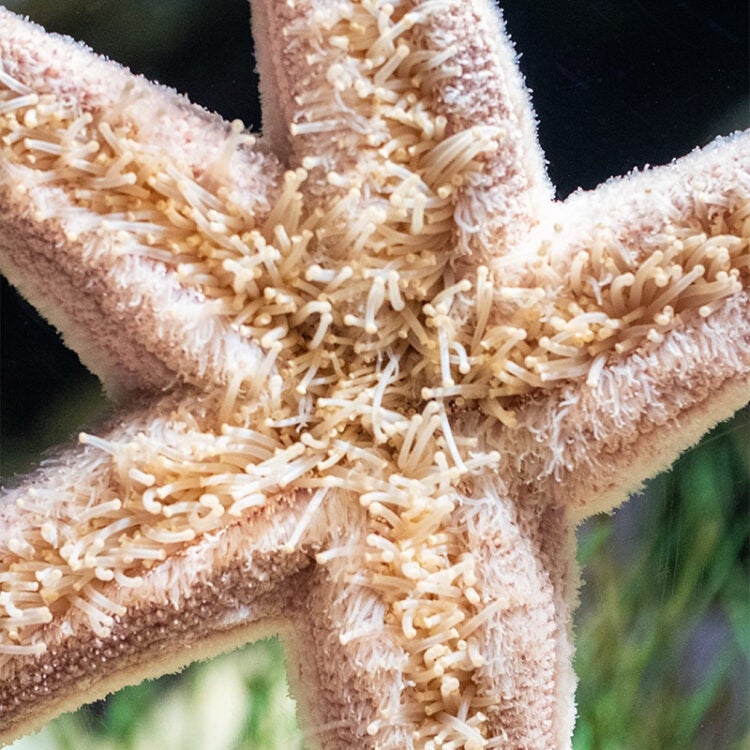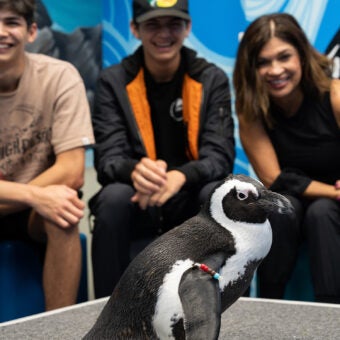-
Size
20-28 inches (51-71 cm) -
Diet
Sand dollars, polychaetes, mussels, clams -
Range
Pacific Coast of North America -
Habitat
Subtidal areas with mud or sand bottom
Physical Characteristics
- Has five rays, or arms, that are thickest near the central disk.
- The top surface is composed of tiny spines less than 0.75 inch (2 cm) in length.
- Can reach a diameter of 20-28 inches (51-71 cm).
- Arms may be up to 3 inches (7.6 cm) thick.
- Typically pink to lavender in color with a soft and smooth surface texture.
Animal Fun Fact
The pink sea star is an opportunistic scavenger feeding on dead fish and other animals.
Diet / Feeding
- Diet consists of sand dollars, polychaetes, mussels, clams and other bivalve mollusks.
- To reach buried bivalves it can extend tube feet next to its mouth about an inch (several centimeters) into the sediment to pull its prey to the surface.
- Also extends its stomach over prey to digest it.
- Opportunistic scavenger feeding on dead fish and other animals.
Range / Habitat
- Occurs along the Pacific Coast of North America from Alaska to southern California.
- Found in subtidal areas with mud or sand bottom to about 360 feet (110 m) depth.
- Appears more frequently in bays than on the open coast, often seen on floats and pilings.
Reproduction & Growth
- Spawning occurs in spring and summer.
Conservation Status
- “Not Evaluated” on the IUCN Red List.
Additional Information
- One of the largest known species of sea star.
- Also called a “short-spined” and “giant pink star.”
- As with many sea stars, it dries out or desiccates, rapidly on exposure to air.
- May perform limb regeneration if the center disc is still intact.
Sources
- www.nwmarinelife.com
- www.rosario.wwc.edu/inverts/Echinodermata
- www.zipcodezoo.com
- Intertidal Invertebrates of California. Morris, R. H., Abbott, D. P., and Haderlie, E. C., pg. 127.







